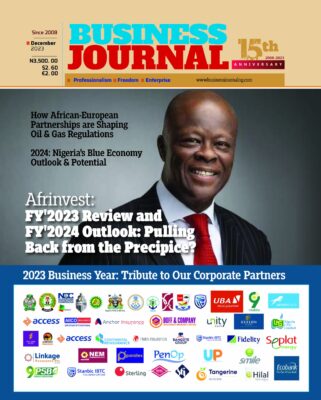The International Air Transport Association (IATA) forecasts global industry net profit to rise to $38.4 billion in 2018, an improvement from the $34.5 billion expected net profit in 2017 (revised from a $31.4 billion forecast in June). Highlights of expected 2018 performance include:
- A slight decline in the operating margin to 8.1% (down from 8.3% in 2017)
- An improvement in net margin to 4.7% (up from 4.6% in 2017)
- A rise in overall revenues to $824 billion (+9.4% on 2017 revenues of $754 billion)
- A rise in passenger numbers to 4.3 billion (+6.0% on the 4.1 billion passengers in 2017)
- A rise in cargo carried to 62.5 million tonnes (+4.5% on the 59.9 million tonnes in 2017)
- Slower growth for both passenger (+6.0% in 2018, +7.5% in 2017) and cargo (+4.5% in 2018, +9.3% in 2017) demand
- Average net profit per departing passenger of $8.90 (up from $8.45 in 2017)
Strong demand, efficiency and reduced interest payments will help airlines improve net profitability in 2018 despite rising costs. 2018 is expected to be the fourth consecutive year of sustainable profits with a return on invested capital (9.4%) exceeding the industry’s average cost of capital (7.4%).
“These are good times for the global air transport industry. Safety performance is solid. We have a clear strategy that is delivering results on environmental performance. More people than ever are traveling. The demand for air cargo is at its strongest level in over a decade. Employment is growing. More routes are being opened. Airlines are achieving sustainable levels of profitability. It’s still, however, a tough business, and we are being challenged on the cost front by rising fuel, labor and infrastructure expenses,” said Alexandre de Juniac, IATA’s Director General and CEO.
“The industry also faces longer-term challenges. Many of them are in the hands of governments. Aviation is the business of freedom and a catalyst for growth and development. To continue to deliver on our full potential, governments need to raise their game—implementing global standards on security, finding a reasonable level of taxation, delivering smarter regulation and building the cost-efficient infrastructure to accommodate growing demand. The benefits of aviation are compelling—2.7 million direct jobs and critical support for 3.5% of global economic activity. And the industry is ready to partner with governments to reinforce the foundations for global connectivity that are vital to modern life,” said de Juniac.
Performance Drivers in 2018
Passenger: Passenger numbers are expected to increase to 4.3 billion in 2018. Passenger traffic (revenue passenger kilometers or RPKs) is expected to rise 6.0% (slightly down on the 7.5% growth of 2017 but still ahead of the average of the past 10-20 years of 5.5%), which will exceed a capacity expansion (available seat kilometers or ASKs) of 5.7%.This will push up the average load factor to a record 81.4%, helping to drive a 3.0% improvement in yields. Revenues from the passenger business are expected to grow to $581 billion (+9.2% on $532 billion in 2017). Strong performance of the passenger business is supported by expected robust GDP growth of 3.1% (the strongest since 2010).
Cargo : The cargo business continues to benefit from a strong cyclical upturn in volumes, with some recovery in yields. Volumes are expected to grow by 4.5% in 2018 (down from the 9.3% growth of 2017). The boost to cargo volumes in 2017 was a result of companies needing to restock inventories quickly to meet unexpectedly strong demand. This led cargo volumes to grow at twice the pace of the expansion in world trade (4.3%). Cargo yields are expected to improve by 4.0% in 2018 (slower than the 5.0% in 2017). While restocking cycles are usually short-lived, the growth of e-commerce is expected to support continued momentum in the cargo business beyond the rate of expansion of world trade in 2018. Cargo revenues will continue to do well in 2018, reaching $59.2 billion (up 8.6% from 2017 revenues of $54.5 billion).
Costs: The biggest challenge to profitability in 2018 is rising costs.
Oil prices are expected to average $60/barrel for Brent Crude in 2018 (up 10.7% from $54.2/barrel in 2017). Jet fuel prices are expected to rise even more quickly to $73.8 per barrel (up 12.5% on $65.6 in 2017). Airlines with low levels of hedging (in the US and China for example) are likely to feel the impact of this increase more immediately than those with higher average hedging ratios (Europe). The fuel bill is expected to be 20.5% of total costs in 2018 (up from 18.8% in 2017).
Labor costs have been accelerating strongly and are now a larger expense item than fuel (30.9% in 2018).
Overall unit costs are expected to grow by 4.3% in 2018 (a significant acceleration on the 1.7% increase in 2017). This will outpace an expected 3.5% increase in unit revenues.
Debt : The industry has used the period of positive cash flows to pay dividends and to reduce debt. The debt to EBITDAR (earnings before interest, tax, depreciation, amortization and rentals) ratio has fallen from 3.7x in 2016 to 3.5x in 2017. It is expected to fall further to 3.4x in 2018. Lower debt means reduced interest payments. Despite the squeeze in operating margins (from 8.3% in 2017 to 8.1% in 2018), the net margin is expected to grow to 4.7% (from 4.6% in 2017) because of lower interest payments. This will see net profits rise to a record $38.4 billion in 2018 (up from $34.5 billion in 2017).















